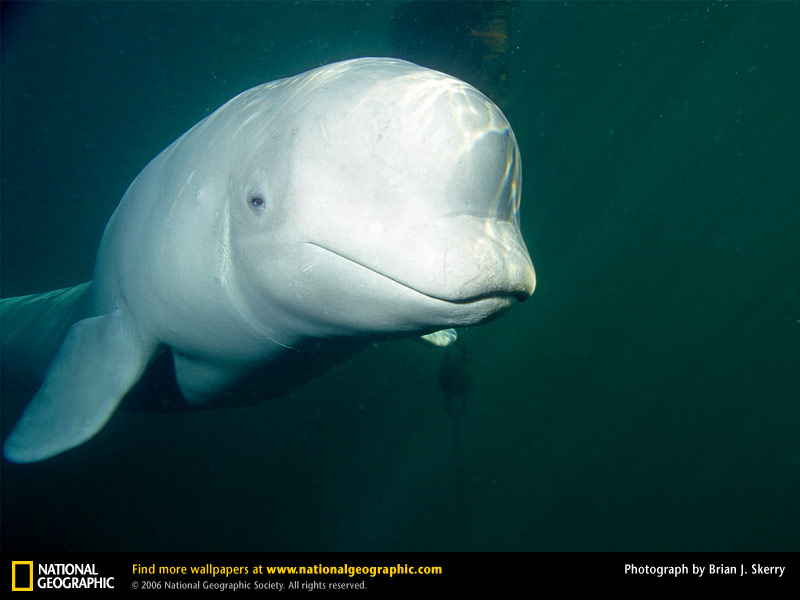 beluga whale pictures
beluga whale pictures beluga whale pictures
beluga whale pictures beluga whale pictures
beluga whale pictures beluga whale pictures
beluga whale pictures Male belugas are larger than females. Males can reach 5.5 metres (18 ft) long, while females grow to 4.1 metres (13 ft).[8] Males weigh between 1,100 and 1,600 kilograms (2,400 and 3,500 lb) while females weigh between 700 and 1,200 kilograms (1,500 and 2,600 lb).[9] This is larger than most dolphins, but is smaller than most other toothed whales.[citation needed]
Male belugas are larger than females. Males can reach 5.5 metres (18 ft) long, while females grow to 4.1 metres (13 ft).[8] Males weigh between 1,100 and 1,600 kilograms (2,400 and 3,500 lb) while females weigh between 700 and 1,200 kilograms (1,500 and 2,600 lb).[9] This is larger than most dolphins, but is smaller than most other toothed whales.[citation needed]The adult beluga is rarely mistaken for another species, because it is completely white or whitish-gray in color. Calves, however, are usually gray.[8] Its head is unlike that of any other cetacean. Like most toothed whales it has a melon—an oily, fatty tissue lump found at the center of the forehead. The beluga's melon is extremely bulbous and even malleable.[6] The beluga is able to change the shape of its head by blowing air around its sinuses. Unlike many dolphins and whales, the vertebrae in the neck are not fused together, allowing the animal to turn its head laterally. The rostrum has about 8 to 10 teeth on each side of the jaw and a total of 34 to 40 teeth.
Belugas have a dorsal ridge, rather than a dorsal fin.[8] The absence of the dorsal fin is reflected in the genus name of the species—apterus the Greek word for "wingless." The evolutionary preference for a dorsal ridge rather than a fin is believed to be an adaptation to under-ice conditions, or possibly as a way of preserving heat.[6] As in other cetaceans, the thyroid gland is relatively large compared to terrestrial mammals (proportionally three times as large as a horse's thyroid) and may help to sustain higher metabolism during the summer estuarine occupations.
Range and habitatThe beluga inhabits a discontinuous circumpolar distribution in Arctic and sub-Arctic waters ranging from 50° N to 80° N, particularly along the coasts of Alaska, Canada, Greenland, and Russia. The southernmost extent of their range includes isolated populations in the St. Lawrence River estuary and the Saguenay fjord, around the village of Tadoussac, Quebec, in the Atlantic and the Amur River delta, the Shantar Islands and the waters surrounding Sakhalin Island in the Sea of Okhotsk.[10]
In the spring, the beluga moves to its summer grounds: bays, estuaries and other shallow inlets. These summer sites are discontinuous. A mother usually returns to the same site year after year. As its summer homes clog with ice during autumn, the beluga moves away for winter. Most travel in the direction of the advancing icepack and stay close its edge for the winter months. Others stay under the icepack—surviving by finding ice leads and polynyas (patches of open water in the ice) in which they can surface to breathe. Beluga may also find air pockets trapped under the ice. The beluga's ability to find the thin slivers of open water within a dense ice pack that may cover more than 96% of the surface mystifies scientists. Its echo-location capabilities are highly adapted to the sub-ice sea's peculiar acoustics and it has been suggested that belugas can sense open water through echo-location.
In 1849, while constructing the first railroad between Rutland and Burlington in Vermont, workers unearthed the bones of a mysterious animal in the town of Charlotte. Buried nearly 10 feet (3.0 m) below the surface in a thick blue clay, these bones were unlike those of any animal previously discovered in Vermont. Experts identified the bones as those of a beluga. Because Charlotte is over 150 miles (241 km) from the nearest ocean, early naturalists were at a loss to explain the bones of a marine mammal buried beneath the fields of rural Vermont. Today, the Charlotte whale aids in the study of the geology and the history of the Champlain Basin,[11] and this fossil is now the official Vermont State Fossil (making Vermont the only state whose official fossil is that of a still extant animal).
On June 9, 2006, a young beluga carcass was found in the Tanana River near Fairbanks in central Alaska, nearly 1,700 kilometers (1,056 mi) from the nearest ocean habitat. Belugas sometimes follow migrating fish, leading Alaska state biologist Tom Seaton to speculate that it had followed migrating salmon up the river at some point in the prior fall.
Its body is round, particularly when well-fed, and tapers less smoothly to the head than the tail. The sudden tapering to the base of its neck gives it the appearance of shoulders, unique among cetaceans. The tail fin grows and becomes increasingly and ornately curved as the animal ages. The flippers are broad and short—making them almost square-shaped
 beluga whale pictures
beluga whale pictures beluga whale pictures
beluga whale pictures beluga whale pictures
beluga whale pictures beluga whale pictures
beluga whale pictures beluga whale pictures
beluga whale pictures beluga whale pictures
beluga whale pictures
No comments:
Post a Comment